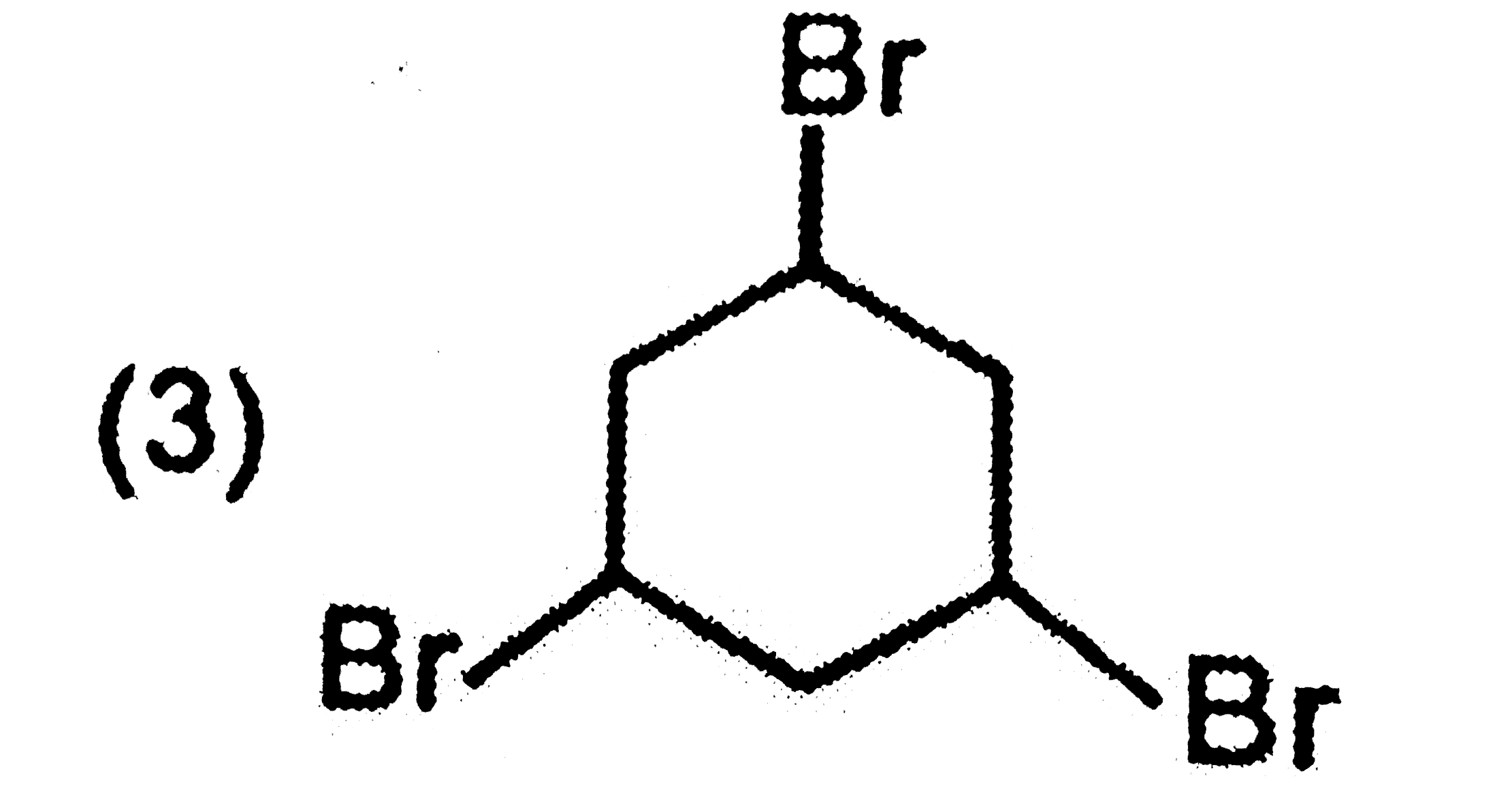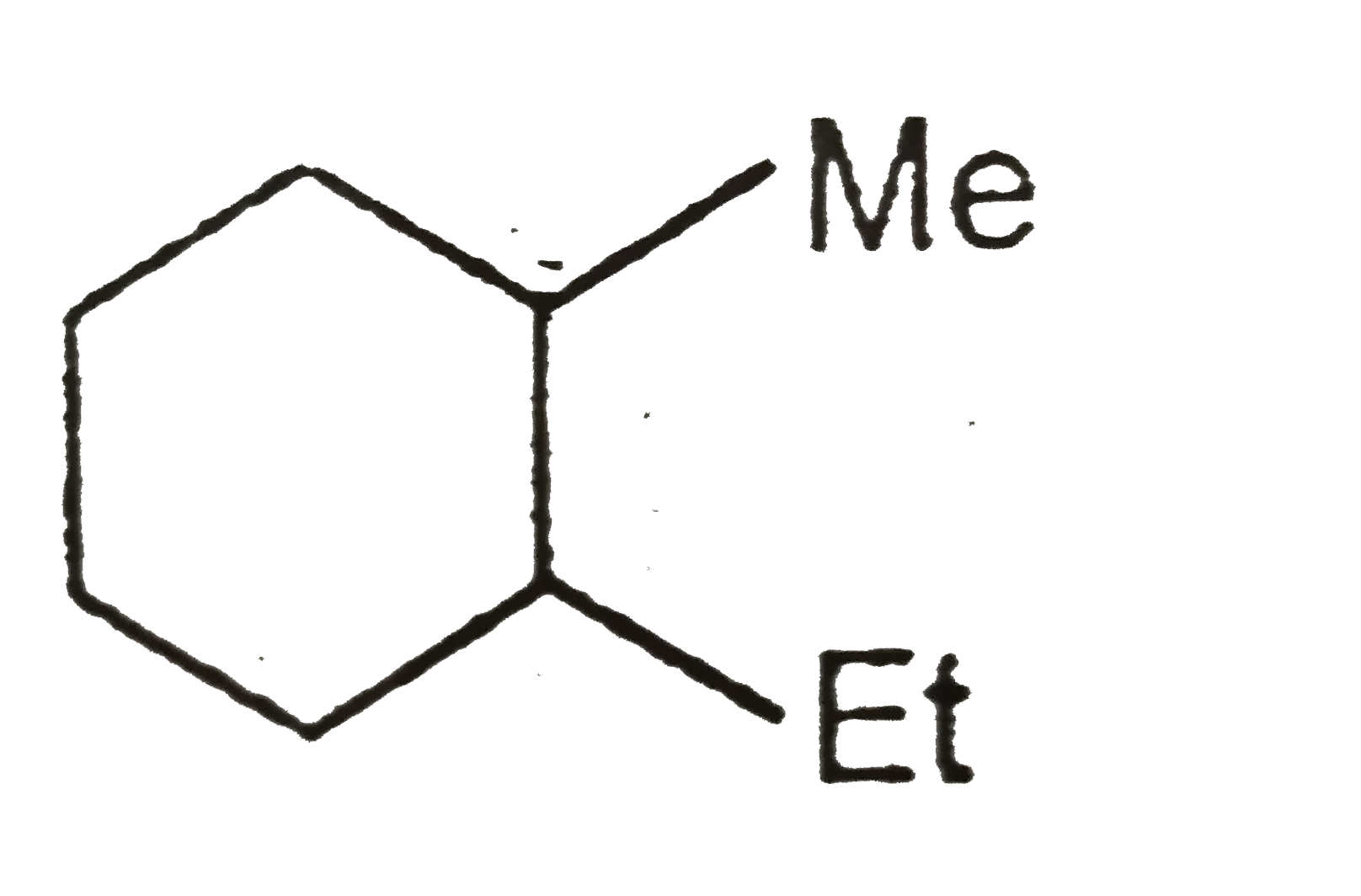Which of the following has highest number of geometrical isomers.




The correct Answer is:D
To determine which compound has the highest number of geometrical isomers, we will analyze the given compounds step by step.
Step 1: Understand Geometrical Isomerism
Geometrical isomerism occurs in compounds with restricted rotation around a double bond or a ring structure. The two main types of geometrical isomers are cis (same side) and trans (opposite sides).
Step 2: Analyze Each Compound
1. First Compound:
- This compound has a double bond and two different groups attached to each carbon of the double bond.
- It can exhibit both cis and trans forms.
- Thus, it has 2 geometrical isomers (cis and trans).
2. Second Compound:
- This compound is symmetrical and does not have different groups attached to the double bond.
- Therefore, it cannot exhibit geometrical isomerism.
- It has 0 geometrical isomers.
3. Third Compound:
- This compound also has a symmetrical structure and does not allow for different arrangements due to the symmetry.
- Thus, it has 0 geometrical isomers.
4. Fourth Compound:
- This compound has a double bond and can show different arrangements.
- It can exhibit both cis and trans forms.
- Therefore, it has 2 geometrical isomers.
Step 3: Count the Total Geometrical Isomers
- First Compound: 2 isomers
- Second Compound: 0 isomers
- Third Compound: 0 isomers
- Fourth Compound: 2 isomers
Step 4: Identify the Compound with the Highest Number of Geometrical Isomers
- The first compound has the highest number of geometrical isomers, totaling 6 isomers.
Conclusion
The compound with the highest number of geometrical isomers is the first compound, which has 6 geometrical isomers.
---
Geometrical isomerism occurs in compounds with restricted rotation around a double bond or a ring structure. The two main types of geometrical isomers are cis (same side) and trans (opposite sides).
1. First Compound:
- This compound has a double bond and two different groups attached to each carbon of the double bond.
- It can exhibit both cis and trans forms.
- Thus, it has 2 geometrical isomers (cis and trans).
- This compound is symmetrical and does not have different groups attached to the double bond.
- Therefore, it cannot exhibit geometrical isomerism.
- It has 0 geometrical isomers.
- This compound also has a symmetrical structure and does not allow for different arrangements due to the symmetry.
- Thus, it has 0 geometrical isomers.
- This compound has a double bond and can show different arrangements.
- It can exhibit both cis and trans forms.
- Therefore, it has 2 geometrical isomers.
- First Compound: 2 isomers
- Second Compound: 0 isomers
- Third Compound: 0 isomers
- Fourth Compound: 2 isomers
- The first compound has the highest number of geometrical isomers, totaling 6 isomers.
The compound with the highest number of geometrical isomers is the first compound, which has 6 geometrical isomers.
Topper's Solved these Questions
- STEREOISOMERISMBOOK - RESONANCE ENGLISHCHAPTER - STEREOISOMERISMEXERCISE - EXERCISE (PART II : NATIONAL STANDARD EXAMINATION IN CHEMISTRY (NSEC) STAGE-1)
55 Videos
- STEREOISOMERISMBOOK - RESONANCE ENGLISHCHAPTER - STEREOISOMERISMEXERCISE - EXERCISE (PART III : PRACTICE TEST-2 (IIT-JEE (ADVANCED PATTERN))
23 Videos
- STEREOISOMERISMBOOK - RESONANCE ENGLISHCHAPTER - STEREOISOMERISMEXERCISE - EXERCISE (PART -II ONLINE JEE MAIN)
3 Videos
- SOLUTIONSBOOK - RESONANCE ENGLISHCHAPTER - SOLUTIONSEXERCISE - Advabced Level Problems (PART-2)
35 Videos
- STRUCTURAL IDENTIFICATIONBOOK - RESONANCE ENGLISHCHAPTER - STRUCTURAL IDENTIFICATIONEXERCISE - Advanced level Problems (Part-III)
12 Videos
Similar Questions
Knowledge Check
Which one of the following has largest number of isomers?
A[Ru(NH3)4Cl2]+B[Co(NH3)5Cl]2+C[Ir(PR3)2H(CO)]2+D[Co(en)2Cl2]+Which of the following is not true about geometrical isomers ?
AThey have different physical propertiesBThey have different orientations in spaceCThey have different connectivity of atoms or groupsDThey are non-interconvertible
Which of the following has largest number of isomers?
View SolutionWhich among the following has highest number of atoms?
View SolutionWhich of the following has highest number of formula units per unit cell ?
View SolutionWhich of the following has the highest mass?
View SolutionWhich of the following has highest —I effect?
View SolutionNumber of geometrical isomers possible of

View Solution
